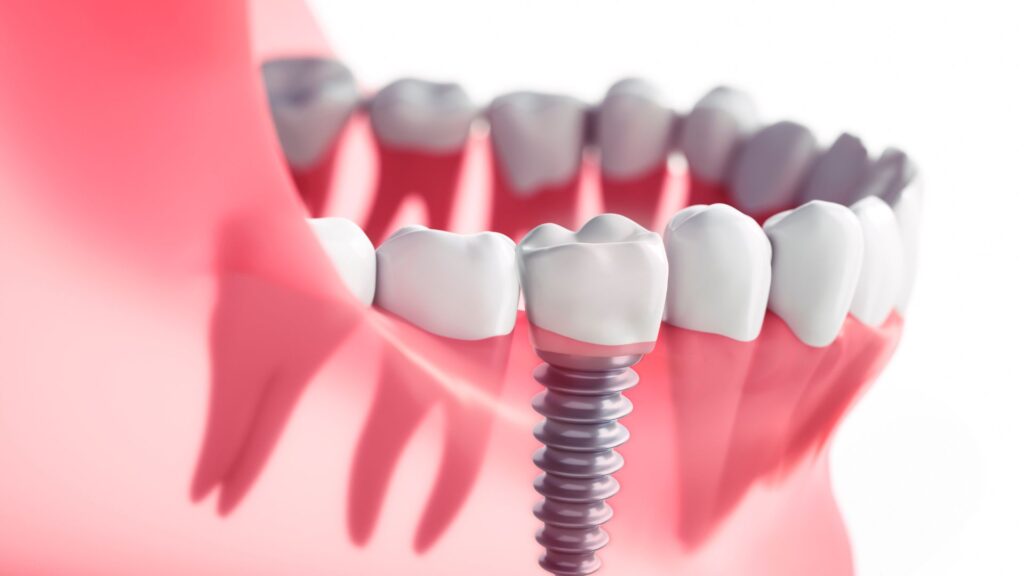Have you ever wondered how far we’ve come in the quest to replace missing teeth? Long before modern dentistry, civilizations used everything from seashells and ivory to bamboo and gold to restore smiles. What began as trial-and-error with natural materials has now transformed into dental implants that look, feel, and function just like natural teeth.
This journey isn’t just about science but about human ingenuity, persistence, and the timeless desire for confidence and comfort. In this article, we’ll trace the fascinating story of dental implants, from ancient experiments to the titanium technology trusted in clinics today.
The Ancient Roots of Tooth Replacement
The desire to restore a full smile is as old as human history. Archaeological records reveal that as early as 2000 BC, Egyptians experimented with tooth replacement. They used materials such as copper pegs, ivory, and even jade to fill gaps left by missing teeth. These early attempts were more symbolic than functional, often placed after death for burial rituals.
Around 630 BC, the Etruscans developed gold bands to secure replacement teeth made from human or animal sources. These creations were innovative for their time, even if they could not truly integrate with the jawbone.
In China, evidence from 4,000 years ago shows that bamboo pegs were placed into bone sockets, hinting at the earliest root-form implant attempts.
Early Experiments: Bamboo, Ivory, Shells & Metals
By 600 AD, the Mayans were pushing the boundaries of dental innovation. Archaeologists have uncovered remains where seashell fragments were carefully shaped and placed into jawbones to replace missing teeth.
Radiographic studies show that in some cases, bone began to grow around these shell implants, suggesting a primitive form of integration.
Other ancient cultures also contributed their creativity. Egyptians placed ivory and metal pegs into jaws, while cultures across Asia explored bamboo and stone implants. These efforts, though limited in success, highlight the universal human desire for functional and aesthetic tooth replacement.
One of the earliest successful implants was the Greenfield implant system of 1913… showed evidence of osseointegration and lasted for a number of years.
The Birth of Modern Implantology: Titanium & Osseointegration
The modern era of dental implants began in the 20th century with the discovery of titanium’s unique compatibility with bone. In 1940, researchers Bothe, Beaton, and Davenport observed that bone naturally fused with titanium rods.
This was a breakthrough moment. A decade later, Leventhal confirmed these findings by placing titanium implants in rabbit bones, which showed exceptional stability.
The true revolution came in 1965, when Swedish orthopedic surgeon Per-Ingvar Brånemark placed the first titanium dental implant in a human patient. He coined the term “osseointegration” to describe the process where bone bonds directly with the implant surface. This concept became the cornerstone of implant dentistry.
By the 1970s and 80s, global recognition of osseointegration was sealed during the Toronto Conference, where Brånemark’s work was widely accepted. From that moment, titanium implants became the gold standard, offering patients durable and natural-looking tooth replacement solutions.
In 1965, Brånemark placed dental implants into the first human patient… the term ‘osseointegration’ emerged — a breakthrough that laid the foundation for modern dental implantology.
Landmark Pioneers in Implant History
Per-Ingvar Brånemark is often called the father of modern implantology. His research reshaped dentistry, leading to the global adoption of titanium implants. His company, Nobel Biocare, continues to influence implant technology today.
Around the same period, Leonard Linkow, an American dentist, was designing blade implants and root-form systems. He is recognized for advancing practical solutions and making implants more accessible in everyday dentistry.
Tomas Albrektsson, another key researcher, contributed by defining long-term success criteria, ensuring that implants were measured not just by placement but by durability and patient outcomes.
Together, these pioneers built the foundation for the safe, predictable, and effective implant treatments we rely on today.

Comparing Ancient and Modern Methods
The path from early experiments to today’s titanium implants is remarkable.
|
Era / Year |
Civilisation / Person |
Material / Innovation |
| ~2000 BC | Egyptians | Ivory, jade, metal pegs |
| ~630 BC | Etruscans | Gold bands as pontics |
| ~600 AD | Mayans | Shell implants |
| 1913 | Greenfield | Metal implant with crown |
| 1940–1951 | Bothe & Leventhal | Titanium integration studies |
| 1965 | Brånemark | First human titanium implant |
| 1980s | Global community | Wide acceptance of titanium |
From bamboo and shells to titanium and osseointegration, dental implants have evolved from trial-and-error into a predictable, long-lasting treatment.
FAQs about Dental Implants in Mira Road
What were the earliest materials used for dental implants?
Ancient civilizations used bamboo, ivory, seashells, and metals like copper and gold. While creative, these implants often lacked stability, and very few fused naturally with bone. They represent the origins of what later evolved into modern implantology.
Who is considered the father of modern dental implants?
Per-Ingvar Brånemark is widely recognized as the father of modern dental implants. In 1965, he successfully placed the first titanium implant in a human jaw and introduced the concept of osseointegration, revolutionizing dental treatment worldwide.
What makes titanium the ideal material for implants?
Titanium is biocompatible, meaning the body accepts it without rejection. Its surface allows bone to fuse directly with it, creating unmatched stability and strength. This process, called osseointegration, makes titanium the gold standard for dental implants.
How did dental implant design evolve through the 20th century?
Implant design shifted from experimental metal frameworks to root-form and blade implants developed by pioneers like Leonard Linkow. With Brånemark’s research, titanium implants became the global standard for predictable, long-lasting results.
Are modern dental implants available in Mira Road?
Yes. Clinics in Mira Road offer advanced implant procedures following international safety protocols. With skilled implant dentists and modern technology, patients here can benefit from durable and natural-looking tooth replacement options.
Is dental implant technology still evolving?
Absolutely. Current research explores nanotechnology, advanced surface coatings, and even 3D printing to make implants more efficient, longer-lasting, and patient-friendly. The future of implant dentistry continues to advance rapidly.
Conclusion & Next Steps
The history of dental implants is a story of resilience, creativity, and scientific progress. From ivory and seashells to titanium and nanotechnology, humanity has always sought better ways to restore smiles. Today, titanium implants are considered the gold standard, combining strength, safety, and natural appearance.
If you are exploring options for dental implants in Mira Road, it is essential to consult a qualified implant dentist who can guide you with personalized treatment planning.
Sources & References
- Dental Council of India (DCI) – Regulations on ethical dental practice and professional standards: https://dciindia.gov.in
- Ministry of Health & Family Welfare, Government of India – National Oral Health Programme, preventive and restorative guidelines: https://main.mohfw.gov.in
- World Health Organization (WHO) – Oral health fact sheets and policy guidance on tooth loss and its health impact: https://www.who.int/health-topics/oral-health
- National Institutes of Health (NIH) – Research and clinical data on dental implants, bone loss, and oral rehabilitation: https://www.ncbi.nlm.nih.gov
- Indian Council of Medical Research (ICMR) – Oral health research initiatives and public health insights: https://www.icmr.nic.in







